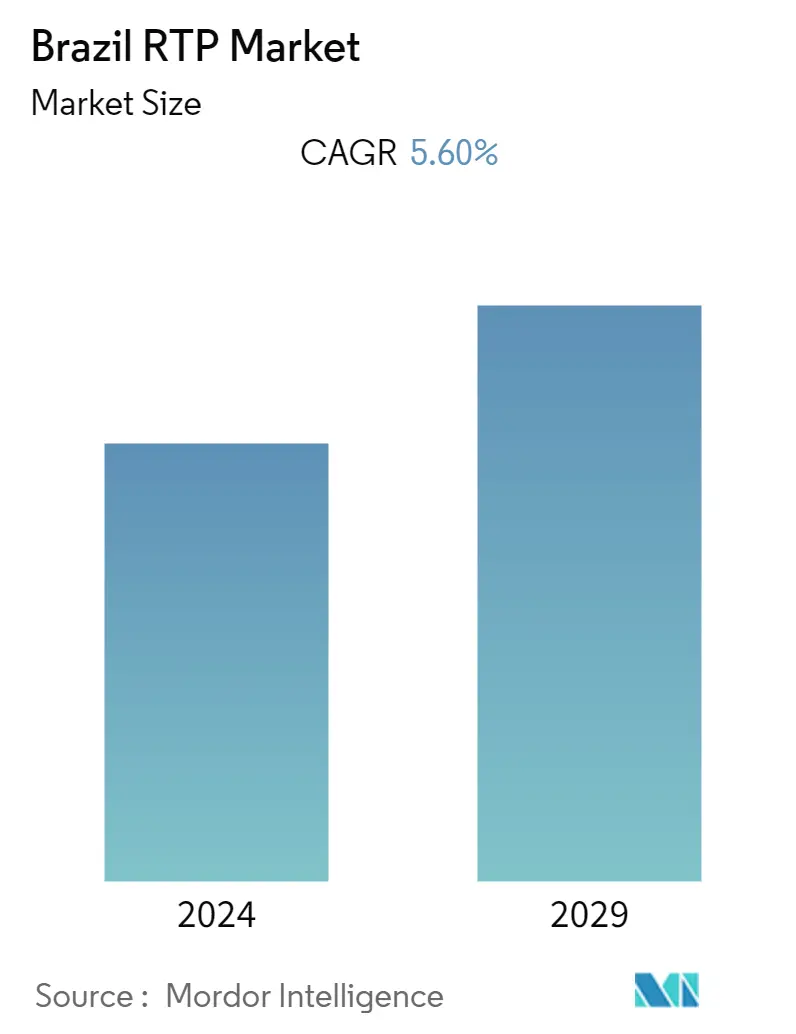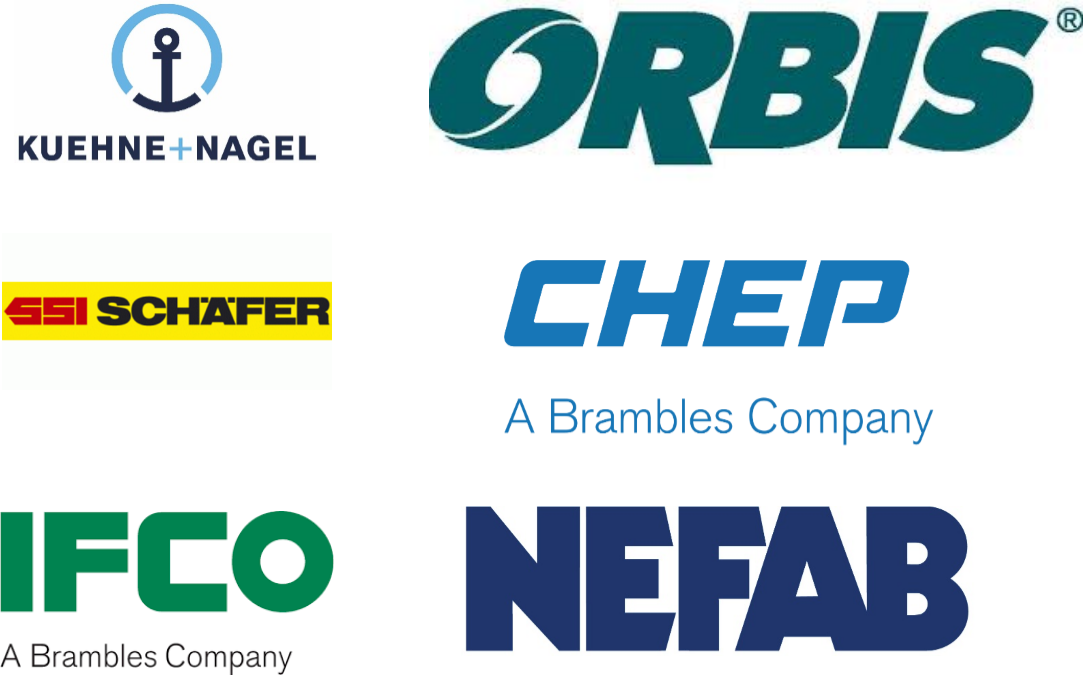Market Size of Brazil RTP Industry

| Study Period | 2019 - 2029 |
| Base Year For Estimation | 2023 |
| CAGR | 5.60 % |
| Fastest Growing Market | Latin America |
| Largest Market | Latin America |
| Market Concentration | Medium |
Major Players
*Disclaimer: Major Players sorted in no particular order |
Brazil Returnable Transport Packaging Market Analysis
The Brazil Returnable Transport Packaging (RTP) market was valued at USD 206.5 million in 2020 and is expected to reach USD 286.4 million by 2026, at a CAGR of 5.6% over the forecast period 2021 - 2026. With this propelling packaging industry, the Brazilian government is also focusing on adopting reusable and recyclable strategies to avoid the wastage of this diverse and growing packaging industry. Wastage and disposal of packaging products can lead to environmental impacts, such as landfills.
- The Brazilian Food and Beverage (F&B) industry is one of the most vibrant industries that has seen unprecedented growth in the recent past, and continues to expand rapidly. This can be attributed to the changing demographics, increase in disposable incomes, and urbanization, in the country. The Brazilian Supermarket Association (ABRAS) reported supermarket revenues at USD 353.2 billion in 2017, a 5.4% of the country's GDP. This result represented an increase of 0.8% in real terms and 4.3% in nominal terms. The retail sector is made up of 89,368 stores, expanding in both size and number of stores, 0.9% and 0.4%, respectively.
- Of the overall retail industry, food and grocery accounts for a significant share in revenue, in Brazil. The growth in the retail industry is due to the demands from the consumers that subsequently result in rise in production and supply. Thus, transport packaging comes into action in the food and beverage industry. Reusable plastic containers (RPCs) excel at both temperature control and product protection, delivering superior quality in the marketplace. Designed and built for transport, display, safety, and over a hundred uses each, RPCs protect quality, reduce cost, and eliminate waste; thus, propelling the food and beverage industry to generate significant opportunities for the RTP market in Brazil.
- The initial costs of RTP are high. This is because initially durable and costly products, such as crates, pallets, containers, are purchased (as a higher volume needs to be purchased, and the more durable nature of the materials are used). As a result of this, many companies view returnable transport packaging as a capital investment.
- The usage of RTP may also increase operational costs, including, for example, transportation, sophisticated equipment, and tracing and tracking. These may pose as barriers to the adoption and use of RTP. Furthermore, barriers to the usage of RTP could be maintenance, storage, and administration. Additionally, the management of RTP is also resource intensive.
- Another disadvantage of returnable transport packaging is that there is a significantly greater upfront cost due to the materials used, as well as the requirement for additional inventory to ensure that there is sufficient for use in all parts of the supply chain. However, the frequency of return and reuse drives the return on investment. The more times a returnable package is used, the greater are the long-term savings. Over time, a returnable package may save a considerable amount of money, when compared to a one-time or limited-use package.
Brazil Returnable Transport Packaging Industry Segmentation
Brazil has been a promising country for the global and Latin American packaging companies that are looking to expand their market presence in the country. The Brazilian packaging market is the fifth-largest in the world, with Brazil being the seventh-largest economy in the world, by nominal GDP. Moreover, there has been a constant growth in the Brazilian packaging market, from 2011 to 2016, due to a combination of various factors, like rising urbanization, investments in the construction sector, and the expansion of the healthcare sector.
| By Material | |
| Plastic | |
| Metal | |
| Wood |
| By Product | |
| Containers | |
| Pallets | |
| Drums and Barrels | |
| Other Products |
| By Application | |
| Automotive | |
| Food and Beverages | |
| Consumer Goods | |
| Other Applications |
Brazil RTP Market Size Summary
The returnable transport packaging (RTP) market in Brazil is experiencing significant growth, driven by the expanding food and beverage sector and the increasing demand for sustainable packaging solutions. The Brazilian government's focus on reusable and recyclable strategies aligns with the growing need to minimize environmental impact from packaging waste. The vibrant food and beverage industry, fueled by changing demographics, rising disposable incomes, and urbanization, is a major contributor to this market's expansion. The retail sector, particularly food and grocery, plays a crucial role in this growth, with reusable plastic containers offering benefits such as temperature control, product protection, and cost reduction. Despite the high initial costs and operational challenges associated with RTP, the long-term savings and environmental benefits make it an attractive investment for many companies.
The Brazilian RTP market is also bolstered by the e-commerce sector, which is rapidly growing due to high internet penetration and an increasing number of online shoppers. The demand for RTP solutions is particularly strong in the retail and e-commerce industries, where cross-border purchases require more logistics operations. Additionally, industries such as oil and gas, chemicals, and pharmaceuticals are seeking cost-effective and durable packaging solutions, further driving market demand. The competitive landscape is characterized by major players expanding their market share through strategic collaborations and acquisitions. However, economic challenges, such as limited consumer spending, could impact market growth. Overall, the RTP market in Brazil presents substantial opportunities for growth, supported by the country's economic development and increasing focus on sustainable packaging practices.
Brazil RTP Market Size - Table of Contents
-
1. MARKET DYNAMICS
-
1.1 Market Overview
-
1.2 Introduction to Market Drivers and Restraints
-
1.3 Market Drivers
-
1.3.1 Growing Food and Beverage Sector in Brazil to Propel Demand For RTP
-
1.3.2 Long-term Cost Benefits Associated With RTP
-
-
1.4 Market Restraints
-
1.4.1 Relatively Higher Initial Costs Remain a Concern in Some Parts of the Country
-
-
1.5 Value Chain / Supply Chain Analysis
-
1.6 Industry Attractiveness- Porter's Five Forces Analysis
-
1.6.1 Threat of New Entrants
-
1.6.2 Bargaining Power of Buyers/Consumers
-
1.6.3 Bargaining Power of Suppliers
-
1.6.4 Threat of Substitute Products and Services
-
1.6.5 Intensity of Competitive Rivalry
-
-
1.7 Technology Snapshot
-
1.7.1 Types of Circulation Systems
-
-
-
2. MARKET SEGMENTATION
-
2.1 By Material
-
2.1.1 Plastic
-
2.1.2 Metal
-
2.1.3 Wood
-
-
2.2 By Product
-
2.2.1 Containers
-
2.2.2 Pallets
-
2.2.3 Drums and Barrels
-
2.2.4 Other Products
-
-
2.3 By Application
-
2.3.1 Automotive
-
2.3.2 Food and Beverages
-
2.3.3 Consumer Goods
-
2.3.4 Other Applications
-
-
Brazil RTP Market Size FAQs
What is the current Brazil RTP Market size?
The Brazil RTP Market is projected to register a CAGR of 5.60% during the forecast period (2024-2029)
Who are the key players in Brazil RTP Market?
Kuehne-Nagel Serviços Logísticos, Polymer Logistics NV, Chep Brazil, Nefab Embalagens LTDA and Signode Brasileira LTDA are the major companies operating in the Brazil RTP Market.

